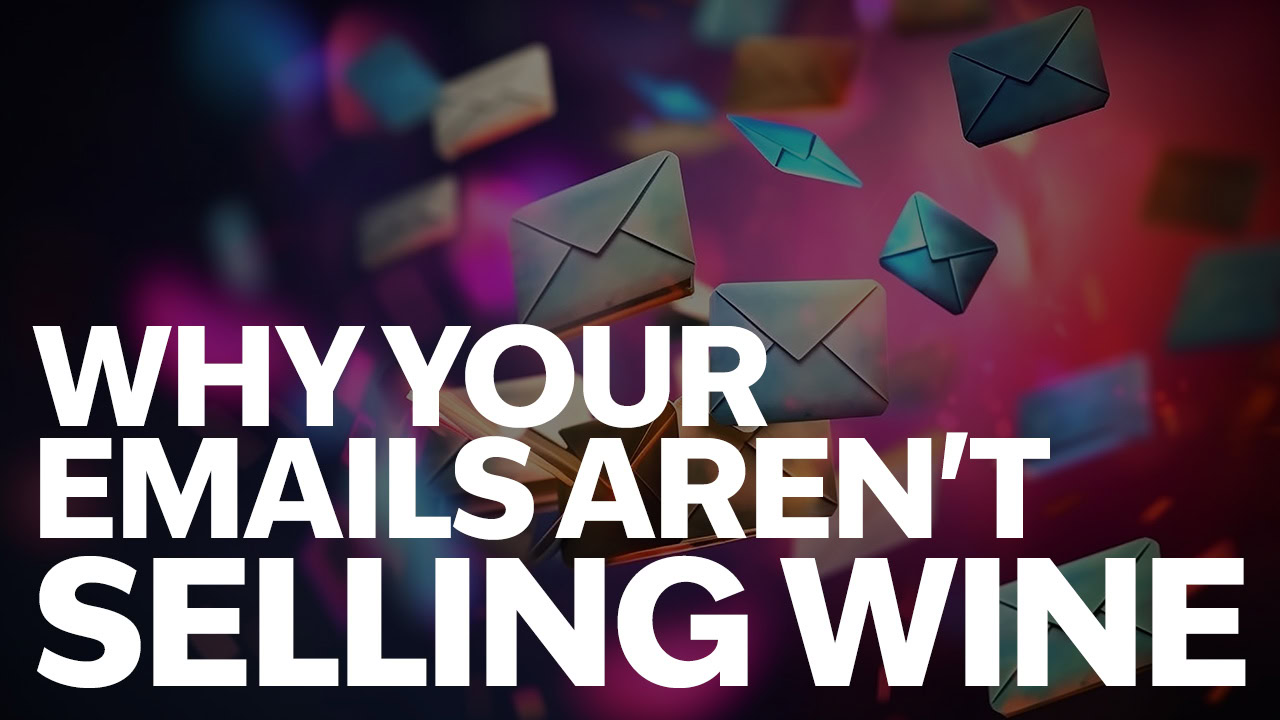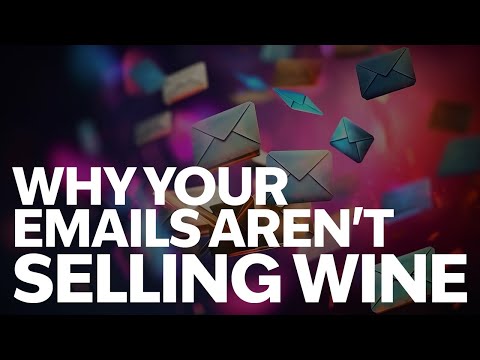In this episode of Headtraining, Polly talks about the common mistakes wine brands make with their email marketing campaigns and how to avoid them. From prioritizing social media over email to missing mobile optimization, she dives into practical tips and strategies that can transform your email marketing game. If you’ve been struggling to make the most of your email lists or are unsure how to navigate GDPR and SMS compliance, this episode is for you!
Social Media vs. Email: The Real Winner
I see a lot of brands today still prioritizing social media over emails. Social media, as we’ve seen with the dumpster fire that is Twitter and many publishing platforms such as Medium, where—looking at you—are quick to change their offerings, their benefits, their features, their subscriber ability. Your email list is your asset. You own it. It allows you to speak directly to your customers and fans. You control access, timing, format, audience, and it’s not going anywhere.
Email has consistently been the topmost performer in your marketing game. Even better—assuming that you’re on the up and up, which I’m going to trust all of you are—your email recipients gave you permission to talk to them. They opened the door for you to start the conversation, and as long as you can keep it delightful, entertaining, or relevant, they’ll keep listening.
Plus, to be fair, we all just like email better. At 5forests, we have this ongoing mantra: Social is for sharing, email is for asking.
- According to a 2023 survey by Statista, 73% of respondents said they prefer to receive promotional content through email, while only 15% said they prefer social media.
- A 2021 report by McKinsey & Company found that email marketing is up to 40 times more effective than social media at generating leads.
- A 2022 study by DMA found that 77% of marketers have seen an increase in email engagement over the last 12 months.
In the current climate of poor social media practices, I implore you: email first, social media second.
The Myth of Segmentation
Next, don’t get too hung up on segmentation. No marketer is going to tell you this because segmentation, alongside A/B testing, is often touted as the holy grail of email marketing. But for the average winery struggling to just get emails out the door consistently, it’s quite difficult to engage in extreme granular segmentation.
The ones that you probably need to be paying attention to are wine club versus non-wine club, locals versus non-locals, and high lifetime value customers.
Put automations to work for you.
Automations are wonderful. They’re infinite in variety. They can be completely overwhelming, but I recommend that you use them to streamline communications that you would be doing otherwise, or to mirror what you’re already doing in your physical spaces.
Start with a welcome email or welcome series. Whatever floats your boat. It can be as heavy-handed or as gentle as you wish. Maybe—just maybe—add in an abandoned cart email. But I’d say maybe because not all audiences love them. We found that American audiences are very accustomed to receiving abandoned cart emails, and in many cases, they even wait for that abandoned cart email to arrive in anticipation of some kind of discount.
European and Australasian audiences tend to find abandoned cart emails a little intrusive and off-putting. So, judge based on your own audience.
Definitely add in a reactivation email for people who have either not opened several recent emails or have not been in the tasting room in a while or haven’t made an online purchase in months. A list is only as good as your engaged readers. If they aren’t into you, let them go, unsubscribe them, and stop paying for their records.
Branding vs. Functionality: The Font Debate
Custom fonts—now, I get this. You’ve paid a lot of money for that branding. You’ve been told that consistent brand recognition is based on consistent visual identity. The problem is you can’t control what that email looks like or what those custom fonts look like when it arrives in your audience’s inbox.
You need to stick to system fonts, and I know that this is going to be controversial. You need to stick to system fonts so that when you are designing the email, you can see exactly what your audience is going to see. Good presentation beats out visual identity every single time.
Image Strategy: Beyond Bottle Shots
Bottle shots are great for product pages. And indeed, they can be really good for product listings within an email, but they aren’t great for catching the reader’s eye and encouraging them to keep reading. Lead with photos of happy people engaging with your brand or your offerings. If you can’t make that happen, you can use photo editing software to turn your boring bottle shot into something fun and seasonal.
This leads us to the inimitable gif: to gif or not to gif.
The Gif Debate
I’ve seen gifs have tremendous success in emails. I love them, but you need to be aware of a few things if you want to use gifs in your emails. One, specific to wine ownership and attribution—a lot of publicly available wine gifs have been created by brands for their own promotion. Don’t accidentally end up using one of those file sites.
Gifs can be huge file sizes. Imagine trying to open that in your inbox on dodgy Wi-Fi or with roaming data. Use compression. Remove extra frames, reduce the color palette, or shorten and loop. Try to keep your gifs under five megabytes at worst—and one megabyte at best.
Stock Photos: The Dos and Don’ts
Sometimes you just gotta do it. Sometimes you just don’t have the picture that you need. But the email has to go out. Again, watch for bottles from other brands or bottles that look nothing like yours. A great hint is: when in doubt, stick with glassware, but also watch the glassware. If you and your audience aren’t drinking out of cute little French bistro glasses or your grandma’s crystal, don’t use stock photos that feature those glasses.
And one more thing about images and glassware. This is for all users, not just email: keep aside a set of glasses that is only ever used for photography. There’s nothing worse than having gorgeous images marred by fingerprints all over the glasses or the bottles. And no, you cannot Photoshop those away.
Image-Only Emails: A Warning
Image-only emails—you’ll recognize them in your inbox because they don’t resize responsively. They look beautiful, but they’re not very functional. Relying solely on images to convey your message is detrimental. Not only do these emails cause deliverability issues, but spam filters often flag them. They risk alienating subscribers who have images disabled or slow internet connections, and mobile users will struggle with image loading or resizing issues.
Accessibility and Mobile Optimization
A blend of text and images, with crucial information conveyed in that text, is a more reliable and accessible approach to your email marketing. Don’t forget your mobile styling. A significant portion of emails nowadays are being opened on mobile devices. It’s imperative to ensure that your emails are mobile-friendly. This includes a responsive design, ensuring that text is legible with appropriate font sizes, and that images and buttons are sized and spaced for easy interaction on touch screens.
Accessibility is easy to overlook in emails, but it’s essential to ensure that your emails are accessible to everyone, including people with disabilities. This can be achieved through clear, straightforward language, alt text for your images, and a logical, easy-to-follow structure. Remember to test in dark mode.
Tracking Metrics and Staying Compliant
Email marketing requires ongoing attention; rarely setting up campaigns and then not reviewing their performance can lead to missed opportunities for optimization and growth. It’s essential that you track your metrics like open rates, click-through rates, and revenue generation to understand what’s working and what’s not.
Ignoring spam laws, including GDPR, is a biggie. If you buy a list, rent a list, or mislead readers with an inaccurate subject line, your email service provider may monitor the rate at which your emails are marked as spam. A high spam complaint rate can lead to your emails being filtered into spam or junk folders, drastically impacting your deliverability rate. It could even result in your domain or IP address being blacklisted.
Conclusion
There we go. We’ve covered a lot of ground today. I hope you’ve all been taking notes because what stands between a wine brand that could and a wine brand that did is often a well-oiled, spam-law-abiding, customer-loving email marketing machine. Until next time, keep those emails flowing. Test, learn, and iterate. Pat yourself on the back for a job well done!

